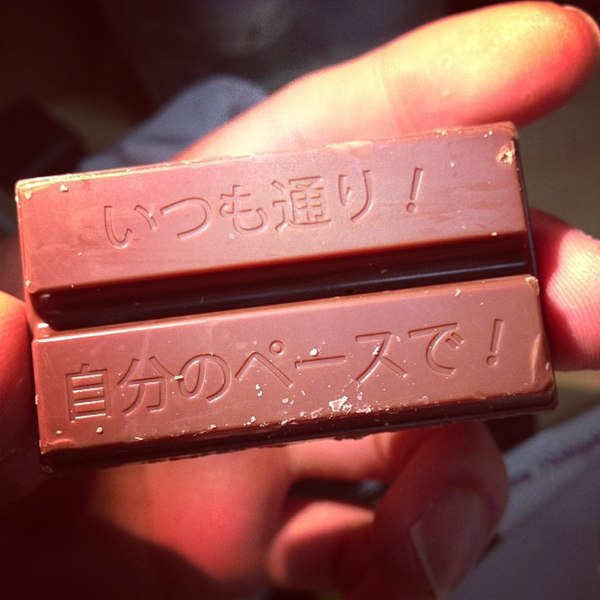Hello ladies and gents this is the Viking telling you that today we are talking about
Kit Kats in Japan
There have been more than 300 limited-edition seasonal and regional flavors of Kit Kat chocolate bars produced in Japan since 2000, many exclusive to the country and not produced elsewhere. Nestlé, which operates the Kit Kat brand in Japan, reports that the brand overtook Meiji Chocolate as the top-selling confection in Japan from 2012 to 2014.
The company's marketing campaign, which partnered with Japan Post to sell the bar in 20,000 post offices, won an award in 2010. The campaign encouraged associations of the product's name with the coincidental cognate Kitto Katsu (きっと勝つ), translated as "You will surely win", and could be mailed as a good luck charm for students ahead of university exams.
Kit Kats were introduced to Japan in 1973 when British confectioner Rowntree's made an agreement with Japanese confectioner and restaurant owner Fujiya. In 2014, they were the top-selling confection in the country. The Kit Kat brand took the number one sales position from Meiji chocolate in 2012, though Meiji remains the leading confection company in Japan overall.
In 2004, the green tea flavor was introduced. Since then, the product has been sold in more than 300 seasonal and regional flavors. The top-selling flavor of the candy bar in 2010 was soy sauce. Nestlé attributes the success of the flavor varieties to the tradition of omiyage, in which regional specialties are brought back for family and co-workers from trips away. The company believes the limited-edition seasonal models create a "scarcity and rarity of value" for customers.
The business model was created to solve a problem the company found in Japanese convenience stores, which frequently rotated items and flavors off of shelves. By producing smaller runs of flavors, the company was better able to control its production costs. It was also economically viable in Japan because there is no initial product fee for listing new products in Japanese convenience stores.
Kit Kats in Japan are produced at Nestlé-owned factories in Himeji and Kasumigaura. The milk chocolate used for Kit Kats is made from whole-milk powder and Nestlé buys most of its cacao beans from West Africa.
and as always have a chilled day from the Viking

Comments
Post a Comment